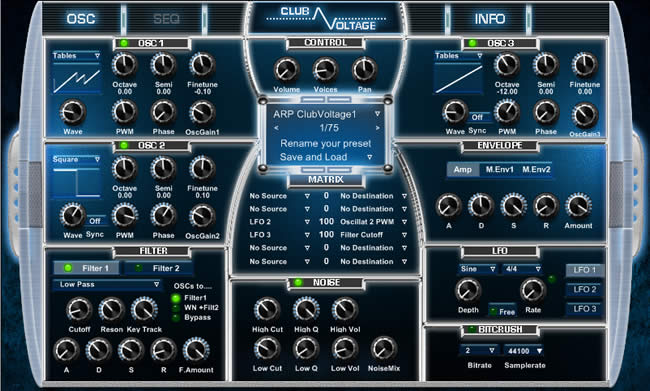Generally in terms of quality you get what you pay for.All. VST and DX 'autotune type plugins' are for Vegas. Include Celemony Autodyne in your search. With Auto-Tune Evo VST, you've got a set of tools to properly test, tweak and perfect the sound output. The program provides a clean interface with all of the tools to toggle pitch amount, amplitude and formant. It can also retune the speed, 'humanize' and add a natural vibrato to the target audio track. The 'Elastic Audio' component was superseded by the more streamlined 'Vocal Tune' years ago. You'd still find this in the same manner as 'Elastic Audio', e.g. By right-clicking on an audio object to bring up the context menu, and going to the 'Pitch & Tempo' sub menu = 'Vocal Tune' option. The current hotkey is 'S'. For $399, Sound Forge Pro is an impressive tool that offers features unique in their own right and makes itself a valuable component in a sound editor’s toolkit. Antares SoundSoap – Legendary & Simple Sound Cleaner.
Missing the note
Few singers are perfect. sometimes, the pitch of their vocal slightly misses the exact note they are trying to hit. If they are little out of tune, the vocal track can still be rescued – or ruined, depending on one’s point of view. The pitch of the note is dependent on the frequency of the sound wave. The A above middle C is usually defined as 440 Hz. Therefore manipulation of the frequency can produce a different note or hit an exact note from a noise that is slightly off-key. Musical scales are divided into 12 pitches each separated by a semitone. The difference in note between two adjacent keys on a piano or frets on a guitar neck.
Pitch correction
The goal of pitch correction is to retune a slightly higher or lower note to the nearest semitone. In the system usually used by MIDI instruments in which pitch is assigned a number, with 440-Hz A being 69 and each semitone increasing or decreasing the pitch number by 1, it is related to frequency F by a simple formula. So, using a computer to correct the frequency back down or up would ensure that recording sounds in tune. Nevertheless, sound engineers can’t simply change the frequency itself. The duration of the sound would change too- that’s why sped-up tapes sound chipmunk-like. This is because the frequency of the wave is related to its speed via its wavelength. Today, producers can alter the frequency without changing the speed by going digital.

Auto-Tune
The term Auto-Tune has become embedded in popular culture as a common description, or generic term. It describes audible pitch correction in music. Andy Hildebrand is the engineer that created Auto-Tune. Hildebrand developed methods for interpreting seismic data. He subsequently realized that the technology could be used to detect, analyze, and modify the pitch in audio files.
Auto-Tune effect was first developed by Antares Audio Technologies. This effect uses a proprietary device to measure and alter pitch in vocal and instrumental music recording and performances. Originally, it disguised or corrected off-key inaccuracies. It allows vocal tracks to be perfectly tuned even though they are originally slightly off-pitch.
The processor slightly shifts pitches to the nearest true, correct semitone (to the exact pitch of the nearest tone in traditional equal temperament). Additionally, producers often use the Auto-Tune effect to distort the human voice.
Commercial use
The earliest commercial use of Auto-Tune as a vocal effect in a popular song was Roy Vedas’ Fragments Of Life on August 17, 1998, and later in Cher’s “Believe” and Eiffel 65’s “Blue (Da Ba Dee)”. The effect differs from a vocoder or the talk box. For example, in an early interview, the producers of “Believe” claimed they had used a DigiTech Talker FX pedal. ”Sound on Sound” editors felt this was an attempt to preserve a trade secret After the success of “Believe”. So, the technique became known as the “Cher Effect”.
Originally, engineers designed Auto-Tune to discreetly correct imprecise intonations. However, Cher’s producers used it to “exaggerate the artificiality of abrupt pitch correction.” This technique soon became a widespread technique used in live performances and in pop recordings throughout the first ten years of the 21st century. Modern day examples of artists known for using Auto-Tune are T-Pain, Lil Wayne, Future, Migos, Travis Scott, and Lil Uzi Vert.
Additional resources & source texts
https://en.wikipedia.org/wiki/Auto-Tune
Editing audio can be a tedious task and to obtain professional results, proper pitch must be accomplished. With Auto-Tune Evo VST, you've got a set of tools to properly test, tweak and perfect the sound output.
The program provides a clean interface with all of the tools to toggle pitch amount, amplitude and formant. It can also retune the speed, 'humanize' and add a natural vibrato to the target audio track. Along the top of the interface, you'll also find options to change the key of the audio, scale, scale detune, transpose and modify the throat length to provide natural sounding audio.

As an audio plug-in for Antares Auto-tunes, it really does provide a world-class editing option for getting the perfect pitch with a bunch of different corrections for different types of audio tracks not limited to instrument playback and professional and amateur singers.
The graphical mode of Auto-Tune Evo VST can meticulously adjust wave-forms and zooming in and out can provide minuscule corrections.
In terms of options and program preferences, different options can be tuned such as the buffer size, number of undo actions and the window size.
All in all, Auto-Tune Evo VST is certainly worth a look as its really professional tools can make a world of difference in optimizing and perfecting the sound of audio tracks.
Compability and licenseAuto Tune Sound Forge Download
This download is licensed as shareware for the Windows operating system from audio and video editors and can be used as a free trial until the trial period ends (after an unspecified number of days). The Auto Tune Evo VST 6.0.9.2 demo is available to all software users as a free download with potential restrictions and is not necessarily the full version of this software.
Compatibility with this pitch correction software may vary, but will generally run fine under Microsoft Windows 10, Windows 8, Windows 8.1, Windows 7, Windows Vista and Windows XP on either a 32-bit or 64-bit setup. A separate x64 version may be available from Antares Audio Technologies.
Auto Tune No Sound Forge
Filed under:Auto Tune Sound Forge Download
- Auto-Tune Evo VST Download
- Major release: Auto-Tune Evo VST 6.0
- Pitch Correction Software